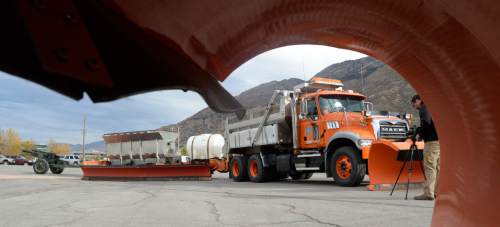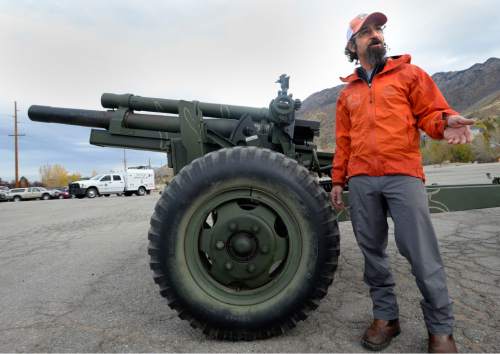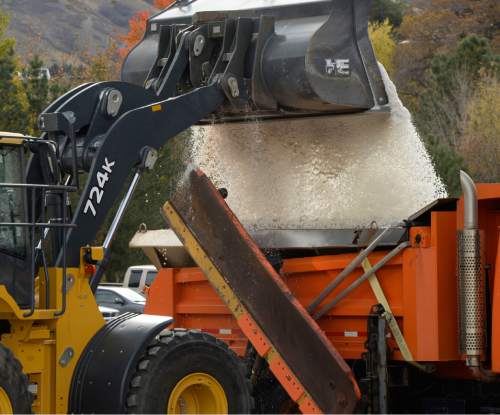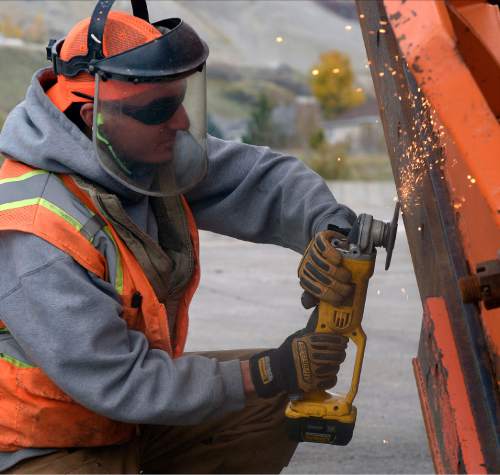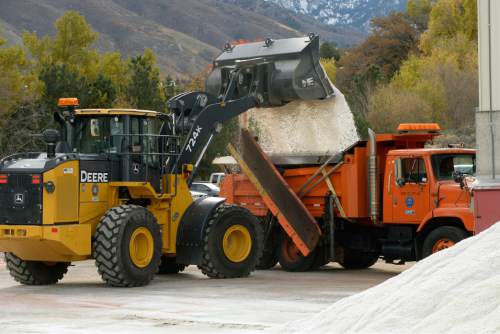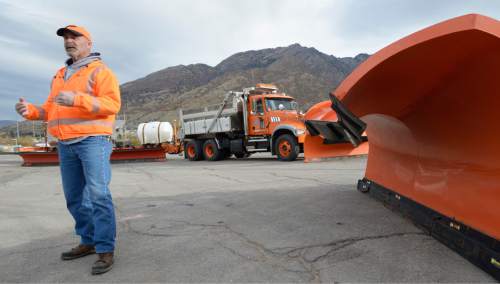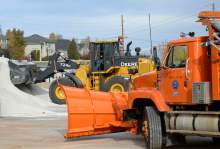This is an archived article that was published on sltrib.com in 2015, and information in the article may be outdated. It is provided only for personal research purposes and may not be reprinted.
The Utah Department of Transportation says it is ready for winter weather and urges the state's drivers to prepare, too.
"Be ready. Understand that rubber and ice don't mix. Slow down. Keep your distance. Check tires to make sure you have adequate tread. Make sure you return to your winter driving skills," said Jake Brown, UDOT roadway operations manager for Big and Little Cottonwood canyons.
UDOT held an annual event Monday to show off some of its winter preparations and equipment, and officials offered a variety of winter-driving tips and examples of the biggest problems.
"People get in a hurry. They usually leave 15 minutes late, because that's life. Then they try to get there quickly in a storm," he said. "They don't give themselves enough time and end up crashing."
Brown suggests, "Look at the forecast before you go to bed so you know if there's going to be snow on the road when you wake up. Set the alarm clock a little earlier so you're not under stress to get to work."
Jeff Reynolds, statewide manager of UDOT incident-management teams, says the worst thing he sees is people not clearing snow and ice off their windows, and driving when they really can't see.
"It happens all the time," he says, shaking his head.
Another common problem comes as roads are initially plowed.
"Once people can see the black of the road again, they speed up. They need to keep it down. It's still slick, especially on the overpasses. The wind gets under them, and they just ice up. That's where we see most of the crashes," Reynolds said. "Plus, we still have some ice and slush, and people lose control when they hit it."
Brown also urges people to give snowplows and emergency vehicles plenty of space — especially some huge UDOT plows and trailers that clear a wide 2 ½ freeway lanes by themselves.
"Let snowplows do their job," Brown said. "They may be in front of you for a little while, but they will turn off eventually and they are out there to make the road safer for you."
Bill Natti, UDOT avalanche-safety program manager, urges motorists and backcountry skiers using canyon areas to check UDOT websites and Twitter feeds about when and where it plans avalanche control — which includes using cannons shooting artillery to set off controlled slides.
He said artillery shells can spread shrapnel for 800 yards, and sometimes backcountry skiers wander into such areas at the wrong time — and cause delays.
Motorists can also avoid delays and congestion by checking websites.
Reynolds and Brown urge motorists to make a winter emergency kit for their vehicles.
"Most important is a shovel, and some kind of grit. Kitty Litter works great," Brown said. "If you find yourself on an icy patch, you can put that Kitty Litter out for a little grit and it may make the difference of you getting out."
Reynolds added, "Make sure that you have the right stuff in your vehicles: snow chains, jumper cables, first-aid kit, flashlight, flares, blanket and maybe a couple of energy bars," plus bottled water.
He adds it's a good time to check windshield wipers and windshield fluid, too.
UDOT said Monday it has 480 full-time snowplow drivers ready to keep 5,900 miles of state highways and 935 miles of interstate freeways clear of ice and snow. It has 508 snowplow trucks, 11 self-propelled snow blowers and eight tow plows that allow one truck to clear multiple lanes.
UDOT expects to use 1.8 million gallons of salt brine on roads this year, 236,000 tons of salt, and 24,000 tons of grit and volcanic cinders. It budgets about $22 million a year for snow removal, about $1 million per winter storm.


